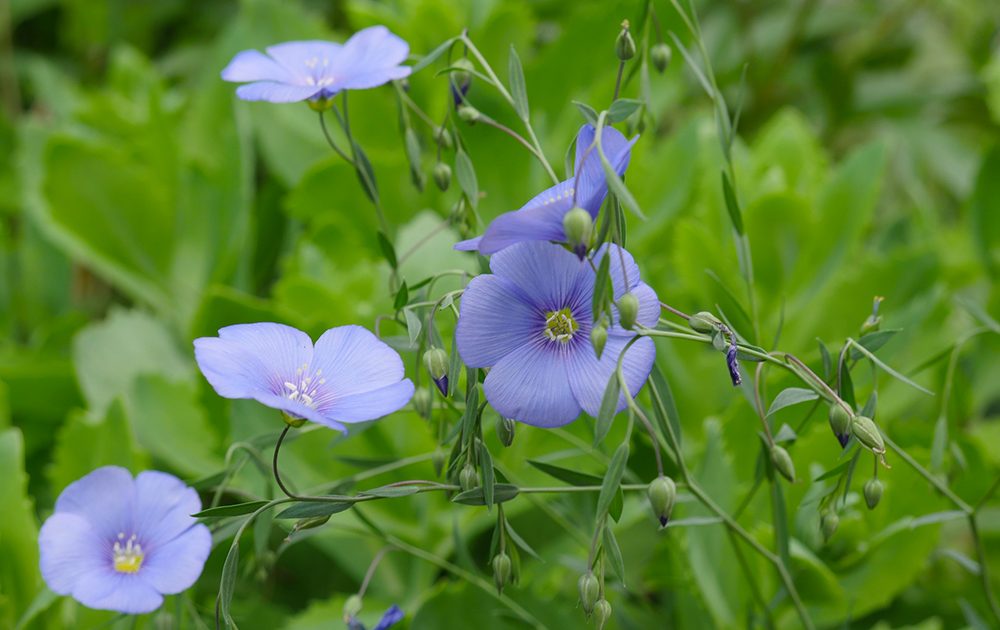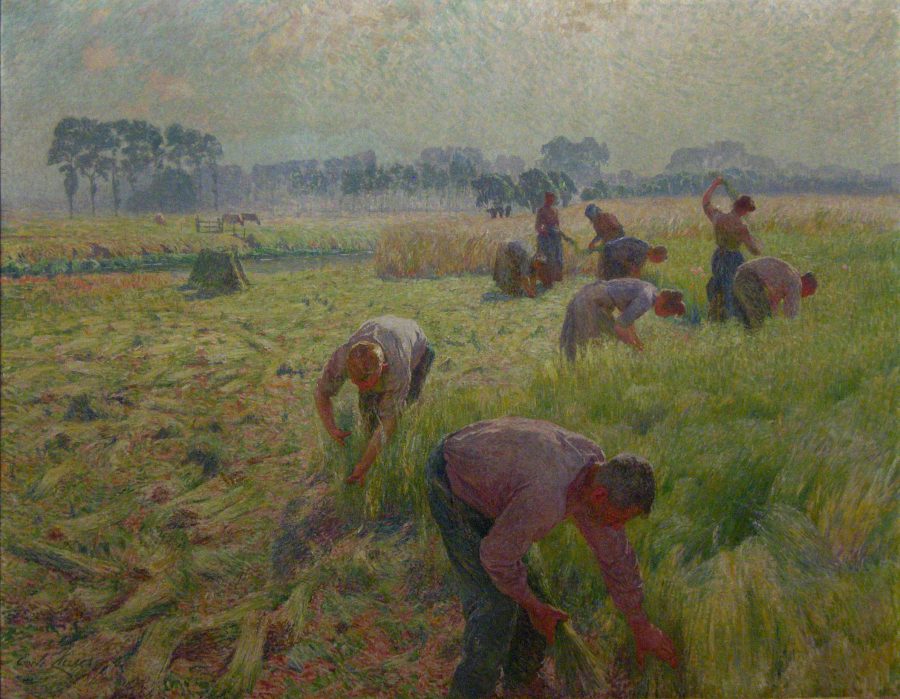Basque ethnography at a glance
Flax was highly esteemed in the old days; indeed, there were no or few farms where it was not grown, because flax fields provided a vital element for the autarchic economy which characterized farmsteads: textile fibre.
Cultivated flax plants were herbaceous and of fragile appearance, with a pure blue flower. Blossomed flax fields in spring are said to offer a breathtaking landscape, unknown for many, perhaps most of us.
It used to be cultivated preferably in high mountain slopes and newly cleared land. If farmed in sandy soil, it overgrows and produces low-value fibre. Several varieties were known, autumn sowing and harvesting from May to June being most frequent. Its cultivation was abandoned during the first third of the 20th century.
The long process before flax fibres could be spun into linen entailed multiple difficulties, as Mogel stated in his work Peru Abarka towards the end of the 18th century, referring to them as linuaren penak ‘the sorrows of flax growing, harvesting and processing’.
Pulling it, atera
As flax ripens, its short-lived flowers are replaced by capsules filled with flat, pointed seeds similar to apple pips; the field then turned a yellowish colour, like a wheat field.
Mature stalks were pulled by hand, roots and all, to preserve the entire length of the fibres. Spread out on the field, they remained there for between a fortnight and a month, so the rain softened them.
Threshing it, garramatu
After the flax was allowed to dry, its seedpods were removed, quite a laborious task, since linseeds, linaziak, are enclosed in small, round capsules. A rudimental comb, known as garrama, consisting in large wooden or iron teeth fastened to a long bench was often used for that purpose.
Forcing the stem tops through the comb, the bolls fell off and were later crushed open with a mallet or placed under the sun for the seeds to be released. The best seeds would be used for sowing, but the remainder were as cherished for its medicinal properties.
Retting it, urtaratu
The threshed bundles of flax straw were weighted down in streams of running water, called lina-putzuak or liho-osinak, for fermentation. The straws were carefully anchored in place with stones, wooden boards, or whatever else. And that water became dirty and foul.
Drying it, sikatu
When sufficiently retted, flax straw was spread out on grass, where it stayed for ten to twenty days until completely dried.
Trials and tribulations did not end there though…
Jaione Bilbao – Ethnography Department – Labayru Fundazioa
(Adapted from Agriculture, part of the Ethnographic Atlas of the Basque Country collection)
Reference for further information: Julián Alustiza. Lihoaren penak eta nekeak [The labour and toil of flax cultivation and processing]. Oñati, 1981.




[…] we transcribe an account of the challenges of flax processing —including those described in the immediately preceding post—, according to an old legend from Bizkaia which Barandiaran gathered in […]